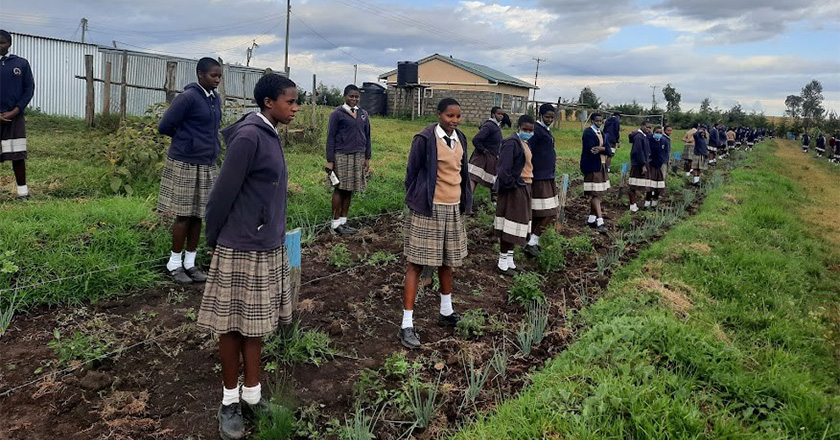Media Room
Let’s Cultivate a Generation of Tree Planting Champions

By James Gatere, the Head of I&M Foundation
As I reminisce about my childhood, one vivid memory stands out – the enchanting world of trees. Trees weren’t just towering giants or lush canopies; they were living symbols of life, resilience, and nature’s wisdom. They were where we played, dreamed, and simply observed the world around us.
Yet, in our pursuit of modernization, we find ourselves gradually losing the indigenous and traditional knowledge associated with trees and their profound significance. This erosion contributes to the growing disconnect between today’s children and the intrinsic values of nature.
Trees, with their myriad benefits, form the backbone of environmental, social, and economic prosperity in our homes, neighborhoods, schools, and communities. They improve air and water quality, mitigate climate change by capturing carbon dioxide, prevent flooding, provide shade, generate oxygen, offer wildlife habitat, enhance property values, and contribute to human physical and mental well-being. It is the children and youth who stand to gain the most from reconnecting with nature, particularly through the embracing trees and forests.
As our country embarks on an ambitious tree-planting initiative, a pivotal part of a grand plan to grow 15 billion trees to combat climate change, we are presented with a unique opportunity to instill a culture of tree planting among children.
Achieving the UN-recommended tree cover of 10 percent in our country is not just a numerical goal; it’s about nurturing a profound understanding and connection to the environment. Kenya, currently with a meager 8 percent tree cover, ranks among the least forested nations in Africa, with only 67 trees per person, starkly contrasting with the global average of approximately 420 trees per person.
School-based tree planting programs emerge as potent tools to keep students connected with trees, imparting the numerous values that trees bring to our lives. Education, a paramount tool in addressing climate change, is mandated by the UN Framework Convention on Climate Change (UNFCCC) to engage the public in awareness campaigns, ensuring access to information on the subject.
While a pristine forest holds undeniable environmental and practical value, even a modest cluster of trees in an area yields substantial benefits. Research indicates that within developed settings like school grounds, even moderate tree shade improves air quality, reduces asthma rates, and combats the intensity of summer heat.
Recognizing the pivotal role trees play in both environmental protection and the creation of a conducive learning environment, the I&M Foundation has collaborated with Miti Alliance for a school greening project across ten public primary schools in Kiambu County. Miti Alliance’s dedicated efforts focus on environmental education, empowering the current and next generation of conservationists.
This initiative aspires to equip 4,000 school-going children with knowledge, skills, and a comprehensive understanding of climate change, aiming to nurture one hundred high-value trees per school. The focus is on fruit and indigenous trees, perfectly adapted to their
environment and integral to the ecosystem’s functionality. This collaboration extends beyond mere tree planting; it instills a culture of tree growth in our youth, nurturing them as future environmental champions. The project is vital in raising awareness about the role indigenous species, soil, and water play in combating the climate crisis.
As we embrace the current rainy season, let us seize the opportunity to engage children during the extended holidays in planting trees around our communities, nurturing these saplings to maturity. This proactive approach will significantly contribute to expanding our forest cover and reversing the adverse effects of climate change. Let’s sow the seeds of environmental stewardship and cultivate a generation of tree planting champions.